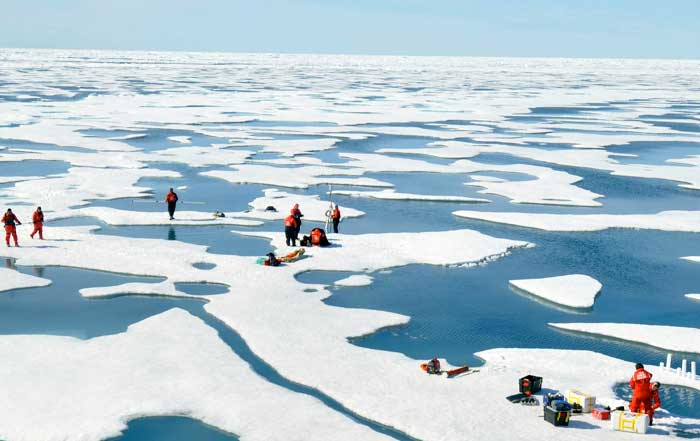A quiet revolution continues to reshape the fabric of global progress. Women innovators, entrepreneurs, scientists, and changemakers are driving transformative ideas that extend beyond profit and into purpose. From biotechnology startups in Germany and green-tech ventures in Japan, to inclusive education programs in Kenya and fintech empowerment platforms in Brazil, women are building models of innovation rooted in empathy, sustainability, and social responsibility. This profound shift toward socially conscious innovation is not just redefining leadership—it is redefining what impact means in a globalized world.
The rise of women innovators mirrors the evolution of society itself. Traditional boundaries between business, ethics, and activism have blurred, replaced by integrated systems that emphasize collaboration and global awareness. As nations face shared challenges—from climate change to healthcare inequities—women have emerged as architects of inclusive solutions. Their influence stretches across industries, revealing how innovation driven by compassion can create real social transformation.
As this feature for World’s Door explores, these women-led innovations represent more than individual success stories. They represent the collective advancement of humanity through creativity, resilience, and a vision of a more balanced, ethical world.
The Evolution of Women in Global Innovation
The journey toward gender-inclusive innovation has been long and complex. A generation ago, women entrepreneurs faced systemic barriers to capital, mentorship, and recognition. Yet, persistent advocacy and technological democratization have opened the doors to participation in ways previously unimaginable. Platforms like UN Women, World Bank’s Women Entrepreneurs Finance Initiative, and accelerators such as She Loves Tech and Women in Tech Global Movement have played key roles in fostering inclusivity and visibility.
In regions like Europe and North America, female participation in venture-backed startups has surged. In Sweden, a country renowned for equality-driven policies, over 35% of startup founders are women in sustainability and design tech sectors. Meanwhile, in Singapore, the government’s Smart Nation initiative has given rise to digital entrepreneurs leading projects in AI ethics, health tech, and eco-commerce. The intersection of policy and opportunity has created ecosystems where women can transform societal challenges into scalable ventures that blend technology and social good.
Globally, the narrative has also shifted from mere representation to leadership. Women are no longer entering industries to participate—they are defining them. They are building inclusive solutions that not only innovate but also address systemic injustices such as poverty, education gaps, and environmental degradation. Learn more about how women innovators contribute to evolving global business landscapes.
The Intersection of Innovation and Social Impact
The defining characteristic of women-led innovation in 2025 is its emphasis on social value. While technology remains a powerful enabler, it is the purpose-driven framework guiding these innovations that distinguishes them. Across the world, social enterprises led by women are integrating ethical values into core business models—focusing on human well-being, sustainability, and cultural cohesion.
For instance, Jessica O. Matthews, founder of Uncharted Power, has revolutionized energy access in underserved communities by embedding kinetic power systems into infrastructure, enabling sustainable micro-grids for developing economies. Similarly, Anne Wojcicki, co-founder of 23andMe, has transformed personal genomics into a movement toward patient empowerment and preventive healthcare. These women exemplify how innovation infused with empathy can produce sustainable, inclusive outcomes.
The global movement toward ethical entrepreneurship reflects a new economic mindset that aligns social responsibility with innovation. Women are at the forefront of this shift, leveraging digital technologies to amplify voices, mobilize communities, and drive transparent business practices. Learn more about responsible innovation in the sustainable and ethics sections of World’s Door.
Tech, Sustainability, and Gender Leadership
Sustainability and technology have become inseparable in modern innovation, and women innovators are leading the synthesis of both. In 2025, the global sustainability market—valued at over $16 trillion—reflects a massive reorientation of corporate priorities. Whether through renewable energy solutions, circular economy design, or digital traceability systems, female-led startups are integrating ecological awareness into the very structure of progress.
In Australia, Maggie Zhou, managing director of Alibaba Group (Australia & New Zealand), continues to push for environmentally responsible e-commerce practices. In Kenya, Juliana Rotich, founder of BRCK, developed resilient internet infrastructure for rural connectivity, ensuring access to education and commerce for marginalized communities. Meanwhile, in Denmark, innovators like Ida Tin, co-founder of Clue, are redefining digital health tracking by prioritizing privacy, inclusivity, and data ethics in women’s health technologies.
These pioneers are proof that sustainability is not an afterthought—it is the foundation of the modern enterprise. Their efforts align with the United Nations’ Sustainable Development Goals (SDGs), especially those related to gender equality, clean energy, and innovation infrastructure. Learn more about similar advancements in technology and environment innovation at World’s Door.
Breaking Barriers in Science and Education
Science and education remain two pillars where women innovators have made exceptional breakthroughs. In the global scientific community, initiatives such as L’Oréal-UNESCO For Women in Science have propelled female researchers into prominence, highlighting how diversity fuels discovery.
In South Korea, Dr. Kim Eun-sook, a materials scientist, has been instrumental in developing biodegradable polymers for sustainable packaging, contributing to Asia’s growing bioeconomy. In Canada, Dr. Samantha Nutt, founder of War Child Canada, merges humanitarian work with education reform, providing children in conflict zones with digital learning tools that foster critical thinking and emotional resilience.
Educational innovation extends beyond classrooms. Women have redefined how learning happens, particularly in the era of digital inclusion. Reshma Saujani, founder of Girls Who Code, continues to inspire millions of young women to enter STEM fields, closing the gender gap in tech literacy. By 2025, organizations like Khan Academy, Coursera, and edX have expanded their partnerships with women-led nonprofits to deliver culturally relevant content across the Global South. Learn more about this evolution in the education section.
🌍 Global Women Innovators 2025
Transforming the World Through Innovation & Impact
Women in Global Health and Wellness Innovation
Health and wellness innovation is an area where women have consistently demonstrated leadership grounded in empathy, equity, and scientific precision. Around the world, female scientists, entrepreneurs, and policy advocates are transforming the healthcare system into a more inclusive and holistic domain.
In India, Dr. Swati Piramal, Vice Chairperson of Piramal Group, continues to influence global health initiatives by promoting research into affordable medicine and community-based health programs. In France, Stéphane Pallez, CEO of La Française des Jeux, has invested in wellness-oriented social causes, proving how corporate leadership can serve as a force for public health advancement. Meanwhile, Dr. Katalin Karikó, the Hungarian biochemist whose groundbreaking mRNA research laid the foundation for modern vaccines, remains an enduring example of how women in science shape humanity’s survival.
Digital transformation has accelerated this progress. From telemedicine startups in Nigeria to AI-driven diagnostics in Canada, women have been instrumental in bridging healthcare access gaps. Dr. Funmi Adewara, founder of MobiHealth International, built one of Africa’s leading telehealth platforms connecting patients with doctors through mobile devices. Similarly, Kate Ryder, CEO of Maven Clinic, developed the world’s first digital clinic for women and family health, emphasizing preventive care and reproductive wellness.
These pioneers are dismantling gender and socioeconomic barriers while reimagining global healthcare as a right rather than a privilege. Learn more about global well-being transformations in the health section of World’s Door.
Social Innovation and the Power of Community-Led Change
True innovation extends beyond technological breakthroughs—it thrives in the empowerment of communities. Across continents, women have built networks and enterprises that combine entrepreneurial spirit with community-based impact.
In Latin America, women-led social ventures have emerged as vital instruments of economic and cultural revitalization. Organizations like Laboratoria, founded by Mariana Costa Checa in Peru, train underprivileged women in coding and digital entrepreneurship, creating an ecosystem where inclusion and innovation converge. In South Africa, Basetsana Kumalo transformed her media empire into a platform for youth education, leadership training, and women’s empowerment.
Equally impactful are grassroots initiatives in agriculture and environmental conservation. Wanjira Mathai, daughter of Nobel laureate Wangari Maathai, continues her mother’s legacy through The Green Belt Movement, advocating for reforestation and sustainable land use in Africa. Her work demonstrates how women can combine ecological science, cultural heritage, and community leadership to drive environmental justice.
This community-led model underscores an essential truth: sustainable social innovation requires local ownership, cultural understanding, and long-term empowerment. Explore more on global movements for social transformation in the society and environment sections.
Women Innovators in Technology and Artificial Intelligence
The global technology sector—long perceived as male-dominated—is undergoing an irreversible transformation led by visionary women who see AI, robotics, and data not as threats, but as tools for equity. The influence of women technologists is increasingly visible in 2025, not only in product development but in the ethical frameworks guiding responsible innovation.
Fei-Fei Li, co-director of Stanford’s Human-Centered AI Institute, is one of the most influential voices in shaping ethical AI that prioritizes human welfare. Her work has inspired initiatives worldwide to ensure AI systems promote transparency and fairness. In Canada, Michele Romanow, founder of Clearco, has integrated AI-driven funding analytics to empower underrepresented entrepreneurs globally.
In Japan, Dr. Noriko Arai has redefined the boundaries of AI education with projects that teach machines to interpret and reason rather than merely memorize data, fostering a new generation of cognitive computing. Similarly, in Kenya, Nanjira Sambuli, a digital equality strategist, has been advocating for gender inclusivity in digital governance, ensuring that the global digital revolution remains equitable and human-centered.
Women in AI are not merely developing technologies—they are designing moral architectures that guide their use. Their leadership underscores that the future of AI and technology innovation will be defined not just by intelligence, but by integrity. Learn more about the interplay between digital ethics and innovation in technology and ethics.
Bridging Cultures through Creative and Cultural Entrepreneurship
Innovation does not belong solely to the realm of science or technology; it flourishes equally within the arts and culture. Across continents, women are using creative industries to preserve heritage, promote cultural diplomacy, and empower marginalized communities.
Ava DuVernay, through her production company ARRAY, continues to challenge systemic inequality in Hollywood by providing platforms for underrepresented filmmakers. Her work bridges culture and social justice, influencing storytelling across continents. In Nigeria, Mo Abudu, founder of EbonyLife Media, has turned African narratives into global conversations, ensuring authentic representation on international platforms such as Netflix.
In Italy, Donatella Versace has redefined luxury fashion with an ethical conscience, supporting diversity, sustainability, and humanitarian causes through Versace Foundation initiatives. Likewise, Ai Weiwei’s collaborations with female curators and designers across Europe and Asia highlight the collaborative potential of gender-inclusive creative expression.
These women innovators demonstrate that culture is both an economic engine and a social instrument. By merging art, design, and activism, they cultivate empathy across borders and inspire societies to value diversity as a cornerstone of progress. Explore how global creativity intersects with modern living in the culture and lifestyle sections of World’s Door.
Financial Empowerment and Inclusive Economies
Financial inclusion remains one of the most powerful forms of social innovation. Women-led fintech enterprises are transforming how economies operate by making access to credit, banking, and investment more equitable.
In Nigeria, Odunayo Eweniyi, co-founder of PiggyVest, has built one of Africa’s most successful digital savings platforms, empowering millions to manage finances securely. In Germany, Valerie von der Tann, managing director of N26, has been instrumental in reshaping the digital banking experience for young entrepreneurs and small businesses. Similarly, Anne Boden, founder of Starling Bank in the United Kingdom, has redefined customer-centric banking by integrating transparency, technology, and trust into its foundation.
On the global stage, initiatives such as UN Women’s WE Finance Code and the Global Banking Alliance for Women continue to accelerate female participation in financial leadership. These programs are not just about equity—they are about resilience, ensuring economies remain balanced and adaptive to societal shifts. Learn more about such transformations in the business and world sections.
The Rise of Women-Led Climate Action
Few global challenges demand collective innovation like climate change, and women leaders across continents have proven to be among the most effective catalysts for action. Their approach blends science, local knowledge, and sustainable design, offering practical solutions that address both ecological and humanitarian concerns.
In Sweden, Greta Thunberg continues to shape climate consciousness through activism that transcends generations, sparking youth-led environmental movements across continents. In New Zealand, Jacinda Ardern’s leadership legacy remains influential in green policy frameworks that prioritize biodiversity protection and renewable transitions. Meanwhile, in Costa Rica, Christiana Figueres, architect of the Paris Agreement, continues to advocate for global decarbonization, emphasizing that climate resilience requires moral courage and international cooperation.
The private sector also reflects this shift. Women-led enterprises in sustainable agriculture, renewable energy, and clean mobility are scaling rapidly. Kristalina Georgieva, Managing Director of the International Monetary Fund, has been instrumental in integrating climate risk assessments into global financial stability strategies. Mary Barra, CEO of General Motors, continues to accelerate the global transition toward electric vehicles, reinforcing how industrial innovation and environmental stewardship can coexist.
By merging policy advocacy, grassroots activism, and technological innovation, women are redefining global environmental governance. They are demonstrating that sustainable economies are not just possible—they are profitable. Learn more about how environmental ethics drive economic and social reform in the environment and sustainable sections of World’s Door.
Women Redefining Global Governance and Diplomacy
Beyond business and science, women innovators are reshaping how nations engage with one another. The rise of female diplomats, ministers, and policymakers in 2025 symbolizes a move toward governance that values inclusivity, negotiation, and long-term social vision over short-term gain.
In Europe, Ursula von der Leyen, President of the European Commission, continues to lead policies aimed at digital sovereignty, sustainability, and green industrial transformation. Her leadership demonstrates how cross-border governance can balance innovation with responsibility. In Africa, Ngozi Okonjo-Iweala, Director-General of the World Trade Organization, stands as a pillar of reform, working to make trade fairer and more transparent for developing nations.
In New Zealand, Nanaia Mahuta, the country’s first Indigenous female foreign minister, has bridged traditional Maori values with contemporary diplomacy, creating a cultural model of governance that inspires global conversations about heritage and sustainability. Similarly, Sanna Marin, former Prime Minister of Finland, has become a global advocate for youth leadership, equality, and education reform.
The evolving landscape of women in governance underscores a broader truth: leadership is no longer measured by dominance but by impact. Women leaders have infused politics with humanity, ethics, and foresight, aligning national ambitions with global cooperation. Learn more about the changing global order in the world and society sections.
Transforming the Future of Work and Innovation Ecosystems
The digital economy has opened unprecedented opportunities for women to lead and innovate, particularly in shaping the future of work. Remote collaboration, gig entrepreneurship, and automation have all been reframed through inclusive design.
Whitney Wolfe Herd, founder of Bumble, demonstrated how women-led digital platforms can rewrite narratives around empowerment, privacy, and equality. Melanie Perkins, co-founder of Canva in Australia, continues to lead one of the world’s most successful design startups while maintaining a strong commitment to ethical business and employee wellness. In Singapore, Rachel Lim, co-founder of Love, Bonito, has redefined modern retail by integrating digital analytics with cultural storytelling, creating a sustainable brand ecosystem led by women.
Governments, too, are recognizing that supporting female innovators boosts national competitiveness. The United Kingdom’s Innovate UK Women in Innovation Awards and Canada’s Women Entrepreneurship Strategy provide mentorship, funding, and visibility for high-potential leaders. Globally, organizations like UNESCO and OECD have published data showing that countries with higher female participation in innovation ecosystems experience stronger GDP growth and more sustainable industrial diversification.
In 2025, innovation hubs from Berlin to Seoul are actively building gender-balanced entrepreneurial ecosystems. This shift is not merely symbolic—it is economic. As automation continues to evolve, women’s leadership in AI ethics, digital design, and platform equity ensures that the future of work remains human-centered and fair. Learn more about global innovation ecosystems in the innovation and business sections.
Global Education Reform and the Role of Women Visionaries
Education remains the foundation of societal transformation, and female educators and entrepreneurs are designing systems that prioritize inclusion, emotional intelligence, and critical thinking. Across continents, women are not only improving access to learning—they are redefining what learning means in a rapidly changing world.
Malala Yousafzai, through the Malala Fund, continues to champion girls’ education in regions where inequality remains entrenched. Her efforts have inspired local movements in Pakistan, Afghanistan, and Nigeria, providing millions of young women with access to education and digital literacy tools. Dr. Sara Al Madani in the United Arab Emirates promotes entrepreneurship-based education, encouraging young people to combine academic study with innovation practice.
In Finland, Li Andersson, former Minister of Education, has influenced pedagogical reform by emphasizing social-emotional learning, mental health, and ethical digital use in schools. Meanwhile, in Canada, Dr. Jane Philpott, a former health minister and current university dean, has spearheaded programs combining public health education with community engagement.
The impact of women in education transcends curriculum—it reshapes culture. They are preparing generations not only to work but to think ethically, live sustainably, and act globally. Explore stories of education and cultural advancement in the education and culture sections.
Humanitarian Innovation and Ethical Technology for the Global South
In many developing regions, women innovators are turning adversity into opportunity through humanitarian entrepreneurship. These leaders operate at the intersection of technology, ethics, and human rights, ensuring that innovation serves those most in need.
In Bangladesh, Runa Khan, founder of Friendship NGO, uses digital mapping and floating hospitals to deliver healthcare and education to remote river communities. In Rwanda, Clare Akamanzi, CEO of the Rwanda Development Board, has been a driving force behind policies that attract impact investors and foster inclusive entrepreneurship. Similarly, in Chile, Daniela Pardo, founder of Kodea, leads programs aimed at increasing women’s participation in digital industries across Latin America.
Tech for good has become a defining philosophy among women innovators in the Global South. Initiatives that combine blockchain for microfinance, solar innovation for off-grid villages, and AI for humanitarian logistics are increasingly led by female visionaries who view progress as a shared human responsibility rather than a competition.
This wave of socially driven innovation has redefined what success means in the digital age. It is no longer measured solely by profit but by progress that uplifts communities, reduces inequality, and preserves the environment. Learn more about these humanitarian transformations in the ethics and innovation sections.
Cultural Diplomacy and the Future of Global Collaboration
In the new era of interconnectedness, women are increasingly assuming roles as cultural diplomats—using storytelling, art, and education as tools for peace and understanding. Their leadership transcends political borders and engages the world in meaningful cultural exchange.
In France, Christine Lagarde, President of the European Central Bank, not only guides Europe’s financial stability but also champions global cultural and educational collaborations between institutions to strengthen human capital. In Japan, Yayoi Kusama has redefined art as a form of therapeutic social connection, influencing global contemporary art movements and mental health dialogues simultaneously. Similarly, in South Africa, Zanele Muholi uses photography as activism, documenting stories that bring visibility to underrepresented communities, fostering empathy and inclusion across cultures.
The digital age amplifies the reach of these initiatives. Platforms like UNESCO’s Creative Cities Network and Google Arts & Culture have allowed female curators, historians, and artists to democratize access to cultural heritage. This convergence of technology and culture has created new opportunities for women to build bridges of understanding, reminding the world that creativity and cooperation are vital forms of diplomacy. Explore related cultural insights in the culture and world sections of World’s Door.
Ethical Business as the New Global Standard
In the evolving global marketplace, the idea of business ethics has transformed from a compliance requirement into a strategic advantage—and women are leading this shift. They have redefined business success through sustainability, transparency, and long-term community engagement.
Rosalind Brewer, CEO of Walgreens Boots Alliance, stands as a trailblazer in corporate responsibility, integrating diversity, equity, and healthcare accessibility into business strategy. In Norway, Kjerstin Braathen, CEO of DNB Bank, has spearheaded green finance programs that align profit goals with environmental accountability. In Singapore, Grace Fu, Minister for Sustainability and the Environment, continues to bridge policy, science, and private-sector innovation through climate-positive economic planning.
These examples embody a growing consensus: ethical leadership is not just morally right but economically essential. Women executives and entrepreneurs are developing resilient companies built on principles of inclusion, well-being, and sustainability. This new model of capitalism is reshaping markets worldwide, inspiring corporations to prioritize long-term value creation over short-term exploitation. Learn more about responsible leadership and economic integrity in the ethics and business sections.
Women Innovators and the Changing Face of Global Technology
The convergence of artificial intelligence, biotechnology, renewable energy, and space technology has redefined the meaning of innovation in 2025. Women are now central to shaping how these technologies are applied ethically and inclusively.
Dr. Jennifer Doudna, Nobel laureate in chemistry, continues her pioneering work in CRISPR gene-editing while advocating for global bioethics frameworks that protect humanity from misuse of genetic technologies. Dr. Lisa Su, CEO of Advanced Micro Devices (AMD), has driven the semiconductor industry toward more sustainable and efficient computing architectures, enabling progress in AI and quantum systems.
Meanwhile, Dr. Ellen Stofan, Director of the Smithsonian National Air and Space Museum, advocates for diversity in aerospace and planetary science, ensuring women play a central role in space exploration. Her initiatives align with efforts by NASA’s Artemis Program, which aims to land the first woman on the Moon—symbolizing not just technological triumph but a rebalancing of history itself.
These leaders represent the growing influence of women in frontier industries once closed to them. Their vision ensures that the future of technology remains aligned with ethical human progress. Explore more insights into innovation and technology transformation at technology and innovation.
Women, Society, and the Pursuit of Global Equity
As society evolves, the contributions of women innovators have proven indispensable in achieving social equity. From economic empowerment to gender rights, their leadership shapes the policies and systems that define modern civilization.
Phumzile Mlambo-Ngcuka, former head of UN Women, continues to advocate for gender equality as a cornerstone of democratic governance. Her work underscores how societal advancement depends on inclusive participation across political and economic systems. In Brazil, Tábata Amaral, a young congresswoman and education reformer, exemplifies how women in politics are redefining governance with data-driven empathy and progressive policymaking.
Across Africa and Asia, digital access projects led by women continue to empower millions. Initiatives like Women in Global Health, Digital Opportunity Trust, and AkiraChix have trained women in leadership and technology, ensuring their participation in decision-making across emerging economies. This growing influence demonstrates that when women rise, society itself ascends. Discover more about the evolution of equity and human development in the society and sustainable sections.
The Role of Media and Communication in Amplifying Women’s Impact
Media remains an indispensable force in amplifying women’s stories, influencing both perception and policy. As global journalism evolves to highlight underrepresented narratives, women are at the helm of storytelling that challenges stereotypes and inspires progress.
Christiane Amanpour, Chief International Anchor for CNN, continues to champion ethical journalism that gives voice to human rights issues worldwide. In India, Faye D’Souza uses independent media platforms to highlight social justice, civic accountability, and women’s empowerment in public discourse. Meanwhile, Maria Ressa, co-founder of Rappler and Nobel Peace Prize laureate, embodies the courage and resilience of journalists who confront disinformation and defend democracy under pressure.
Through digital platforms, independent networks, and documentary filmmaking, women in media have become catalysts of awareness, holding institutions accountable and shaping collective consciousness. Their leadership ensures that the truth remains a global currency of justice. Explore cultural and social storytelling initiatives in the culture and world sections.
The Next Frontier: Intercontinental Collaboration for Global Good
The trajectory of women innovators points toward a future defined by global collaboration. Transcontinental partnerships between entrepreneurs, scientists, and policymakers are increasingly common, bridging continents through shared visions for progress.
Programs like Women in Innovation Africa-Europe Partnership, Asia-Pacific Economic Cooperation’s Women and the Economy Forum, and WEConnect International have become engines of cross-border cooperation, enabling women to share technology, mentorship, and investment. These partnerships prove that progress is no longer confined by geography—it is driven by shared values and collective ambition.
In 2025 and beyond, the world’s success in solving its greatest challenges—climate change, inequality, disease, and digital ethics—will depend on these networks of collaboration. Women leaders are ensuring that innovation remains inclusive, compassionate, and forward-thinking. They are uniting science with humanity and business with purpose, building a world where opportunity transcends boundaries.
Conclusion: The Age of Transformational Leadership
As the 21st century enters its second quarter, women innovators are no longer participants in the global economy—they are its architects. Their work across science, business, governance, and culture demonstrates that progress thrives when empathy meets intelligence and when inclusion guides innovation.
Their vision reaches across continents—from Silicon Valley to Nairobi, from Berlin to Jakarta—each contributing to a world where ideas, not inequalities, define destiny. They are turning innovation into an act of healing, progress into a form of justice, and leadership into a reflection of humanity’s highest ideals.
At this defining moment, the world stands on the threshold of a new paradigm where the most transformative ideas are not born in isolation but in unity. Women innovators, through courage and collaboration, are lighting that path forward—creating a global future that is not only smarter, but fairer, kinder, and profoundly human.
To explore more global stories of leadership, sustainability, and culture, visit World’s Door — your gateway to understanding how innovation, ethics, and creativity are shaping a more connected world.










